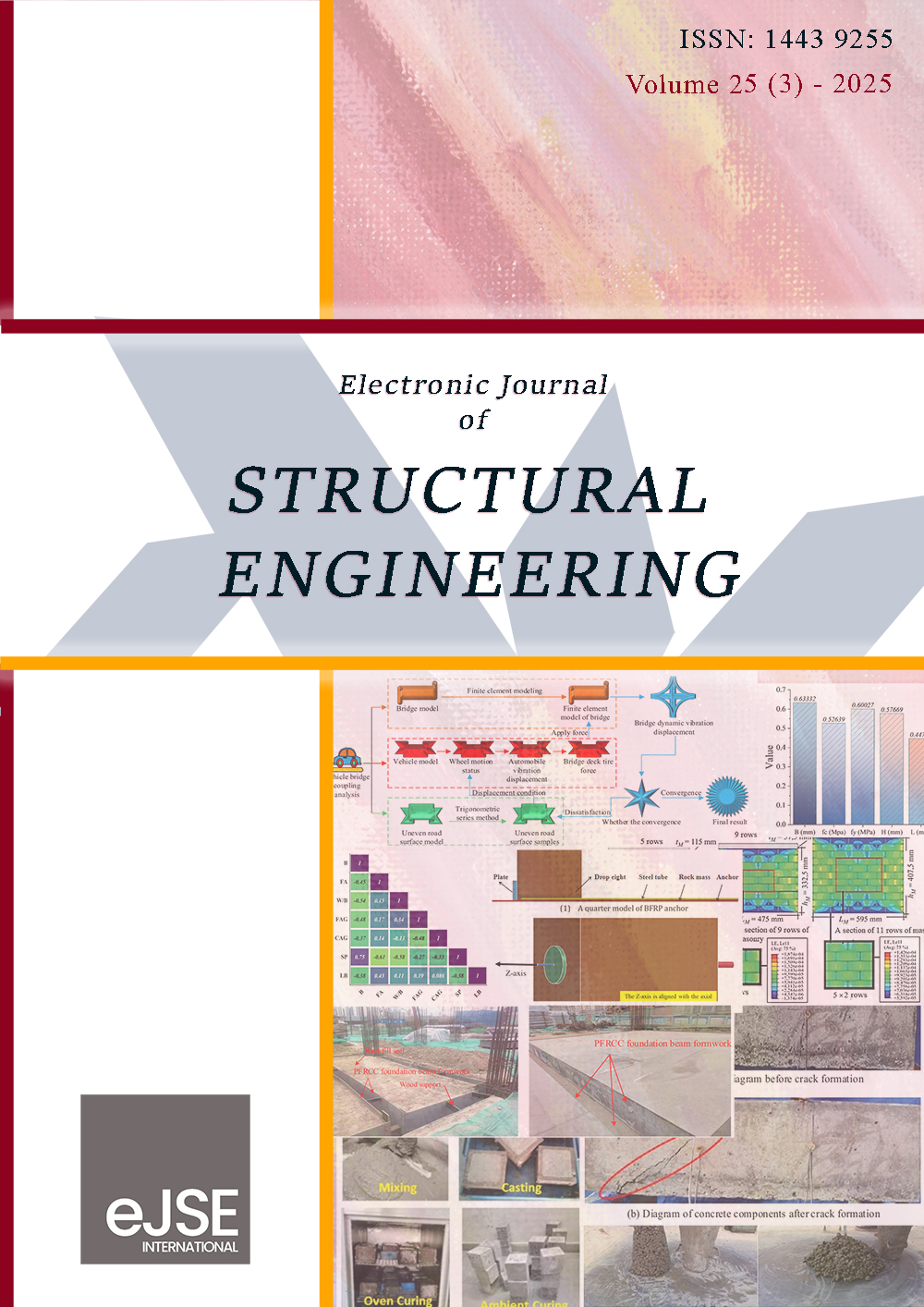Electronic Journal of Structural Engineering is an open access journal, so articles are freely available to the readers.

The Electronic Journal of Structural Engineering (EJSE) is an open-access, peer-reviewed journal. Since its inception in 2001, EJSE has been at the forefront as one of the world's first digital journals, providing an international forum for the dissemination and discussion of cutting-edge research and practical applications in structural engineering. Published by Electronic Journals for Science and Engineering - International (EJSEI), based in Australia, EJSE continues to play a vital role in advancing the field. If you are planning to submit your work to EJSE, please visit: Submissions Page

Volume 24, Issue 3 (2025) of the Electronic Journal of Structural Engineering showcases nine forward-looking studies that push the boundaries of materials innovation, structural performance, and intelligent analysis. Highlights include the use of hybrid machine learning to evaluate the rheology of self-compacting concrete, novel approaches to damage detection in bridges and concrete structures, and optimization methods for pervious concrete mixtures. Other contributions explore fly ash geopolymer mortars with ceramic waste, CFST stub column capacity prediction with ensemble models, and the effective stiffness of unreinforced masonry. Advanced simulations on basalt fiber-reinforced anchors and plant fiber composites for sustainable formwork further underline the issue’s focus on resilience and sustainability.
Together, these papers illustrate how cutting-edge computational tools and material innovations are shaping the future of structural engineering.
Electronic Journal of Structural Engineering is an open access journal, so articles are freely available to the readers.
Acceptance Rate: 19%
Desk Reject Rate: 65%
Days to Accept : 159
Days to Reject: 48
